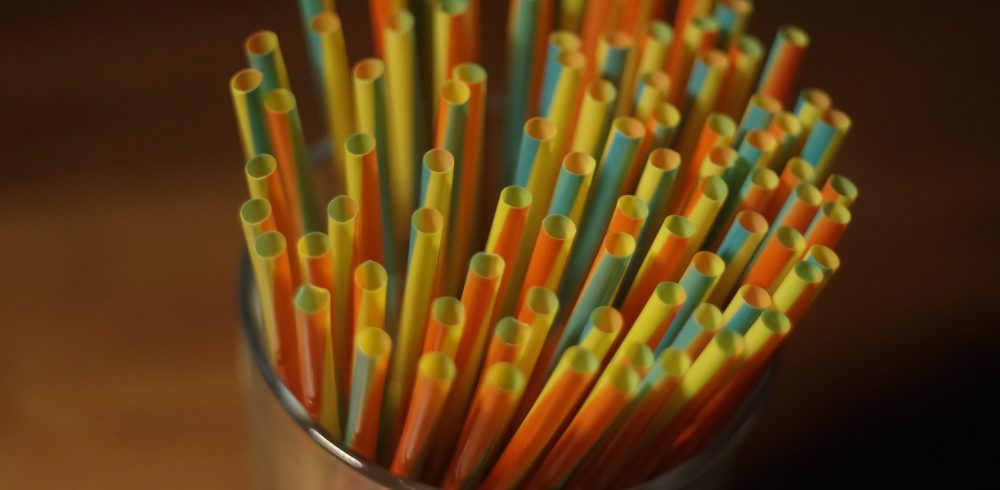In the battle against plastic pollution, few things have grown to be so emblematic of our overconsumption of single-use plastics as the plastic drinking straw. Here, Ben Smye, head of marketing at online materials platform Matmatch, explores some sustainable substitute materials for the drinking straw.
Upon inventing Bakelite, the first manmade plastic, in the early 1900s, Leo Baekeland wrote in his journal that, “this invention will prove important in the future.” Little did Baekeland know that not only would his invention revolutionise human use of materials, it would also become an important problem for the world to overcome a century later.
Plastics are highly versatile materials, with changes in their chemical composition allowing the resultant material to offer properties ranging from high elasticity to high rigidity, all in a lightweight and typically cost-effective package. However, one common property is a resistance to biodegradation. As a result, the overuse and overconsumption of plastic products threatens the global environment, and the largest threat comes from single-use plastics.
According to the website of non-profit organisation Plastic Oceans, more than eight million tons of plastic are dumped in our oceans every year, with 50 per cent of that being single-use plastics. Four per cent of those eight tons are plastic straws alone, a single-use item that some argue is not an essential.
As such, Governments around the world have turned their attention to the pesky plastic pipes. In December 2018, the European Union passed a bill to ban plastic straws, among other single-use plastic products, by 2021. Taiwan, Rio de Janeiro, New York City, Hawaii, Miami beach and multiple cities in California are also moving towards bans on plastic straws.
So, if plastic is out of the picture, what other materials would be the prime candidates for straws? Well, it depends whether consumers want reusable straws or to maintain the convenience of single-use disposables.
Metals
Metals are some one of the most widely used materials in the world, thanks to their versatility and ease of manufacture. Food-grade stainless steel suitable for use in metal straws includes grades 316, 304 and 430.
While stainless steel is an excellent material for food applications, because it can be easily washed and reused indefinitely, a steel straw can have a distinctive feel to it that can change the drinking experience. Some people, for example, complain of the tendency of steel to quickly become hot or cold, depending on the drink.
Likewise, the common use of metals is in applications that don’t require a low flexural modulus. While straws don’t necessarily need to be flexible, the ease that angles can be modified on traditional plastic drinking straws means they are useful, and in some cases necessary, for people with certain disabilities.
Glass
Glass is proving to be another increasingly popular alternative to plastic. You might think that it would be dangerous to use such a fragile material, however many shatter-resistant glasses exist for food applications. One German company, HALM, uses SCHOTT special shock and temperature-resistant glass for their straws, to reduce the risk of breakage.
Glass is fully reusable, recyclable and is even easier to clean than steel, because it is completely transparent. The mouth-feel of glass is also less controversial than metal and preferred by many – just like the difference between a glass Coke bottle and an aluminium can. However, glass is akin to metal in that it does not share the flexibility of plastics.
Bamboo
Bamboo is a versatile natural material, used for its high strength-to-weight ratio and flexibility in many applications, including construction. In fact, it is still used for construction scaffolding in Hong Kong. Bamboo has found place as an excellent alternative to plastic in multiple cases, particularly biodegradable toothbrushes.
One of the major advantages of bamboo straws is that they require almost no processing, because bamboo grows in the perfect straw form. As such, they take less energy to manufacture in comparison to metal and glass straws.
But how does bamboo perform as a material? It discolours slightly in drinks but doesn’t change its shape. As it is a natural material, it must be kept dry, because, if left for too long in a liquid, it could start to degrade.
Bamboo drinking straws sit as a middle ground between those who want reusable straws and those who would prefer to dispose of them, being reusable but having a finite number of uses before it is advisable to dispose of it. Yet unlike conventional plastics, the bamboo will naturally degrade in a handful of years, leaving no harmful chemicals in the process.
Biodegradable plastics
Straws made from biodegradable plastic are also gaining traction, such as those made from polylactic acid (PLA). These would be the closest like-for-like alternative to existing plastic straws, offering similar flexibility and durability.
The validity of the term ‘biodegradable’, however, is very questionable. Mostly, biodegradable materials only break down under a specific set of conditions, which are not typically present where our plastic waste ends up. As such, many countries are even moving towards banning oxo-degradable plastics. Often, biodegradable plastic requires a temperature of more than 50 degrees centigrade to begin the process, something which can rarely be found in the ocean.
In the end, the best alternative to plastic is a subjective decision. Do you still want something disposable? Or something that can be cleaned and reused forever? Or maybe something with the best mouthfeel?
As a product designer, you should ask these questions of yourself and choose your materials, accordingly, specifying the ideal characteristics and sourcing materials with a platform such as Matmatch’s materials search engine. If you do, there is no need to sacrifice convenience to achieve sustainability.















